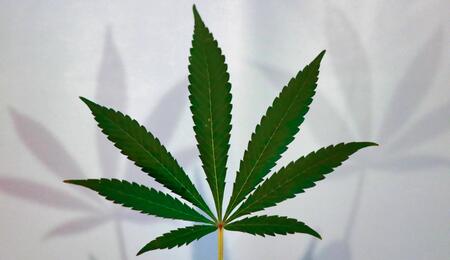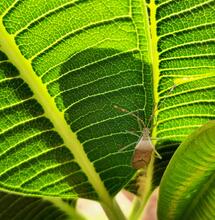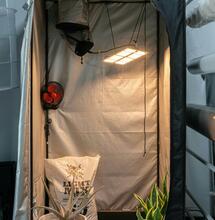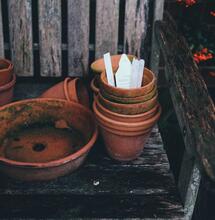How to prepare your substrate

Whether plants are grown under artificial or solar light, the use of an earth substrate as a growing medium remains the most popular method, given the reduced costs of composts and fertilisers. A substrate with balanced components already contains a few nutrients and therefore needs little fertilisation.
Mr. José / info@mrjose.eu Before preparing the earth substrate it is crucial to understand what this means and what is needed. I personally use ordinary soil taken from a private garden, a thicket or a field and mixed with some nutrients. Life is easier for those who own gardens. Those who do not are required to procure earth from nature. Of course, ready-made earth composts can be bought in gardening shops. But this article is not about this. Supposing our soil is taken directly from nature, it needs to be enriched with other components to obtain a quality substrate. The substrate is not an inert material such as the one used, e.g. in hydroponics. The substantial difference between growing in compost and in a hydroponic or aeroponic medium lies in the frequency of watering and fertilisation and in growth speed, with hydroponic/aeroponic growth being faster. If you opt for indoor growing in an earth substrate, then you have to consider a smaller number of harvests per annum vs. the hydroponic/aeroponic method. A terminological distinction is required in this respect; earth is taken from nature whereas an earth substrate is earth mixed with other fertilising components in optimal proportions to achieve nutritional characteristics that are suited for the intended cultivation.
Earth substrate requirements
The earth substrate should be light and soft, these conditions allow optimal root development. A hard and densified substrate is barely penetrable by roots. As a result, more time is required for a sufficient rooting system to develop. In addition, the lack of oxygen slows down the growth of roots and adversely affects their health. Roots are the plant’s mouth; if they are not in ‘good shape’, plants will not absorb nutrients, grow slowly, have less resistance and their yield will be smaller. The substrate needs to be able to absorb water. A substrate with good absorbing properties will distribute all the nutrients contained in a land plot or pot. Humidity distributed uniformly has a positive impact on root and plant growth. To obtain a substrate with the required properties, knowledge of all of its constituent elements is required; these can be either inorganic or organic compounds.
Inorganic compounds
They improve the substrate penetrability and aeration. In the substrate mixture, a 20% maximum proportion of inorganic compounds is required. If you have sandy earth available (which can be easily seen from its crumbliness) no inorganic compounds are required, earth simply needs to be enriched by peat, compost, etc. Perlite: this is an effusive volcanic rock which, treated at a temperature of around 900 °C, expands and generates typically white granules. Perlite is used to make the substrate lighter or drain water at the bottom of pots (similarly to expanded clay). The more frequent use of perlite is in indoor growing or pots. Obviously it can also be used in outdoor crops where it can be replaced by sand. [caption id="attachment_7751" align="alignnone" width="300"] Stable manure is an ideal component of substrates for outdoor growing.[/caption] Expanded clay: Expanded clay is in the form of granules of various sizes obtained from the extrusion of clay (at a temperature of above 1200 °C in rotary kilns). Expanded clay is not used very often as a substrate component. It can be used in large pots. It is unsuited to use in outdoor crops as, unlike perlite or sand it does not have the same aggregating properties and cannot be easily removed. It is more frequently used for drainage at the bottom of a pot by creating a 1 to 4 cm layer beneath the substrate. Sand or gravel: Sand can somewhat replace perlite as it has the same properties and can often be found at no charge. I recommend washing sand before putting it under the earth substrate in indoor growing. In aquarium shops you can purchase washed sand or gravel but, given its cost, perlite will definitely be cheaper. Organic compounds Organic substances make up most of the earth substrate. They increase its nutritional value, improve absorption properties, and change the pH and other parameters. Organic compounds can be added to the substrate in relatively abundant quantities. Let us see the most commonly available types of compounds. Humus: humus is made up of decomposed organic substances of vegetable or animal origin. More specifically, humus is formed in two phases, strictly linked to each other. In the first phase, unstable humus is created from organic matter still to be completely transformed (proteins, peptides, carbohydrates...). The decomposition of organic compounds that results in unstable humus is called mineralisation. It is followed by humidification, where complex organic compounds are transformed into the final product, a dark black substance resisting further decomposition i.e. stable humus, one of the crucial elements that determines earth quality. The humus formation process is quite complex, but describing its generic properties will suffice for the purpose of this article. Humus is the most fertile part of the earth substrate. It retains water, rebalances the earth pH and has the ability to bind with toxic substances. In addition, it creates the best conditions for the life of a few microorganisms. Humus is contained in compost. If you own a garden, you will surely have some compost available. However, if you live in the city you can prepare a compost by yourself, for instance with a composter placed on the balcony and an organic fertiliser. [caption id="attachment_7752" align="alignnone" width="213"] Quality peat is very sticky.[/caption] Peat: an organic substance having undergone partial decomposition, as the acid and anaerobic (oxygen-free) environment around it tend to limit it. Peat forms chiefly in regions of the Northern hemisphere. To make a long story short, it results from the partial decomposition of trees, mushrooms and animals in swampy acid and anaerobic environments. When peat is added to the earth substrate it increases its humidity retention properties. Another part of organic substances is decomposed until humus is created – which is therefore already contained in the peat and has a positive impact on the quality of substrate. An important thing is its reduced pH. The right proportion of peat in a substrate helps obtain an optimum acidity level. Peat alone is too acidic and, therefore, only needs to be used as an additive in the substrate rather than replace it. Peat is non-renewable so, if you are eco-friendly, you should try to avoid it. Stable manure: it is unsuited to indoor growing, but useful for outdoor and greenhouse growing. Manure should be accurately incorporated into the soil, where it gradually releases its nutrients. The ideal period for introducing manure is autumn. When this is done, the soil receives nutrients and, at springtime, it is ready for seeding. Manure is produced from the fermentation of liquid and solid livestock waste and litter materials (stray, sand, sawdust, etc.). Manure is a rich source of nitrogen – used by plants during their growth. If growers do not have a breeding farm nearby, they could source this from any agricultural holding. Cow manure has a higher nutritional value, while horse manure is less nutritious, but slightly warms up the soil. I recommend using cow manure in autumn or early spring. Horse manure can be introduced into the soil even a couple of days before planting but a longer period will favour an even distribution of its nutrients. Bat guano: it consists of bat excrements used as a liquid fertiliser or additive to the substrate. What is the use of bat guano? It is a rich source of phosphorous and nitrogen, two indispensable substances for the regular growth and flowering of plants. Bat excrements are also excellent to rebalance used substrates. Guano is sold in different concentrations and states (powder, granules, etc.). Earthworm castings or vermicompost: the daily activity of earthworms is to dig and eat land. The other side of their body releases a high-quality organic fertiliser, vermicompost. This substance is excellent as an additive for new substrates, or as a booster to revive used substrates, and is suited for both indoor and outdoor growing. Vermicompost can be easily prepared at home. You only need to buy a vermicomposter and special earthworm types (Eudrilus eugeniae, Eisenia fetida, California earthworm or Dendrobaena veneta). Both products are available on the internet. Liquid vermicompost is also available on the market and can be easily added to the substrate with irrigation. [caption id="attachment_7753" align="alignnone" width="300"] A light substrate with the addition of perlite is mainly indicated for indoor growing and whenever regular watering cannot be ensured.[/caption]
How to mix everything
Now that you know what the main components of the substrate are, just one more word, do not mix them all together and in large quantities. In the preparation of the substrate, use a pH tester, i.e. a kit including a reagent bottle, a sampling tube and a colour comparison card. You will find it in gardening shops for a few euros. A pH test will only take 3 minutes – it surely needs to be run when you think your substrate is complete, so as to subsequently adjust the mixture. If peat is added, pH goes down; conversely, if you add soil, the value will go up. In the choice of inorganic compounds my recommendation is to invariably select only one, i.e. just perlite, or sand, or expanded clay. The same applies to organic compounds. Between humus, peat or manure, only choose one to be added. Adding the three of them is unnecessary. Vermicompost and guano are suited to any substrate – add them depending on the manufacturer’s indications. With your own produced vermicompost, just observe the following rule: Suggested proportions
- perlite, sand or expanded clay 10-20 % (can be replaced by sawdust);
- humus, compost or vermicompost 10-30 %;
- ordinary soil 50 %;
- horse manure 10-20 %;
- adding guano is optional, depending on concentration – follow the manufacturer’s recommended dosage.
Conclusions
The preparation of substrates lends itself to tests. Do not be afraid to try out your own ‘recipe’. The purpose of this article is not to give precise indications, but simply guidelines on appropriate behaviours. Growers have already developed so many personal recipes and always create new ones. The most important rule is to obtain a light and soft substrate, whether you grow your plants outside or under a lamp – Good luck!



.png)